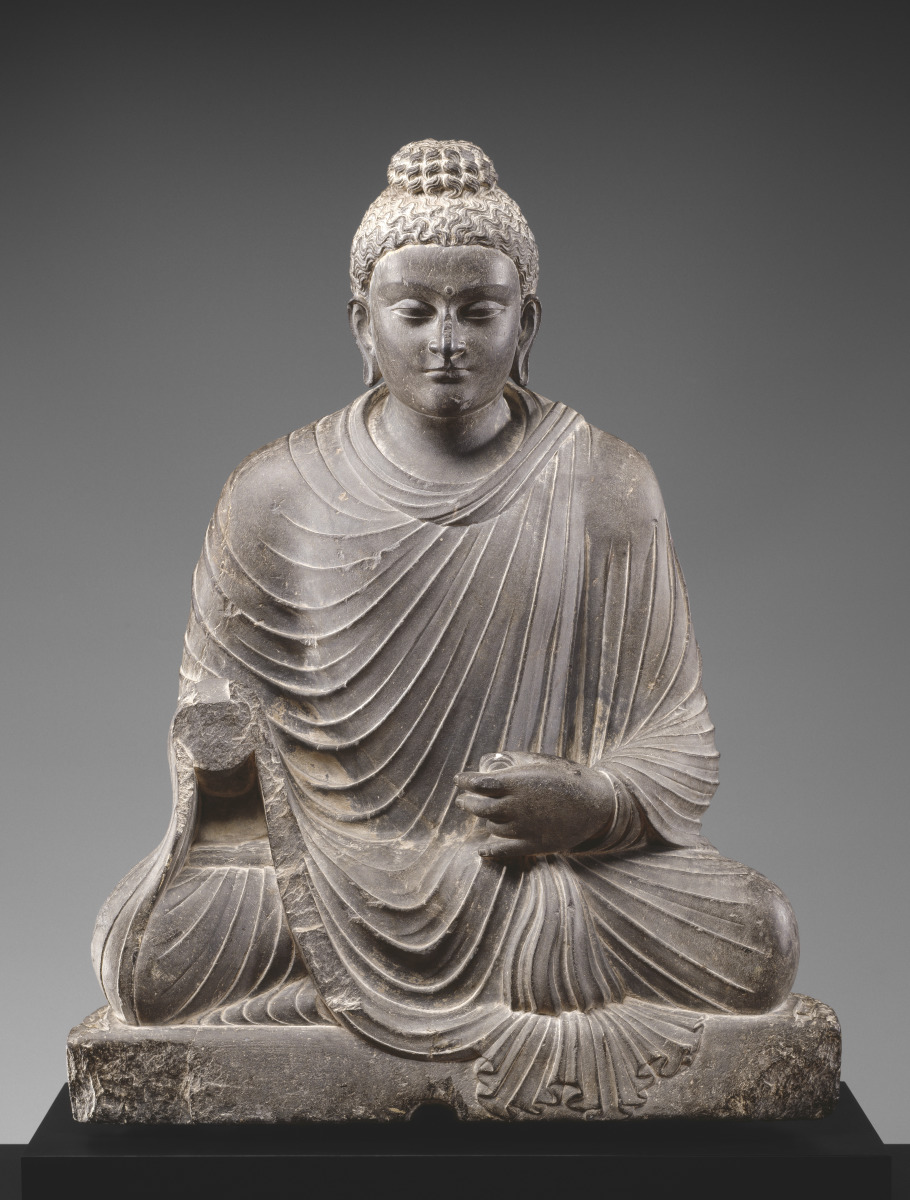
Seated Buddha (Primary Title)
Unknown (Artist)
Behind this Buddha's serene face is an intensity of meditative concentration strongly indicated by the flame-like striations of his hair. These almost frenetic curls climb the cranial protuberance or ushnisha that is a mark of the Buddha's superhuman wisdom. Other standard Indian iconographic conventions include his elongated earlobes, stretched by heavy gold earrings that he wore before renouncing worldly luxuries, and a circular mark or urna between his eyes that symbolizes his extraordinaryinsight. This Buddha's now-broken right hand would have been held in a gesture of reassurance. His left hand gathers a piece of his outer garment, which then cascades from his palm and spreads out on the plinth below him. The confidently renderedfolds of his toga-like robes reveal Western Classicism's impact on the art of Gandhara. Buddha images in this hybrid style would become one of India's most significant artistic exports, providing the earliest models for a long tradition of imageryin Central and East Asia.
Kushan period
Adolph D. and Wilkins C. Williams Fund
Image released via Creative Commons CC-BY-NC
Some object records are not complete and do not reflect VMFA's full and current knowledge. VMFA makes routine updates as records are reviewed and enhanced.

